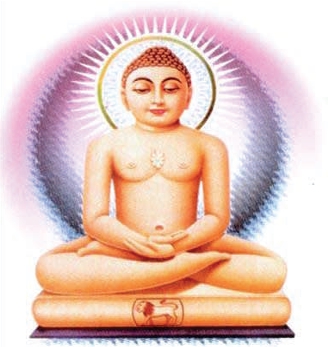
History and Doctrine of Kharatara Gaccha
1. Doctrines
Kharatara Gaccha is the second most important of the Shvetambara gacchas. One of the alternative names of the Kharatara Gaccha is the Vidhisangha, the Assembly based on Scriptural Injunction. The Kharatara approach to the ascetic life is through referral to the literal words of sacred texts. The Kharataras live outside the temples and the temple-dwelling monks are to them heretics who are ignorant of or misuse the sacred texts. Besides the basic Shvetambara canon, there are works by Kharatara suris (great teachers), such as Jinavallabha's Crown of the Assembly.
Besides this scriptural orthodoxy, there is an element of the supernatural in the Kharatara belief system. Suris of the past include wizards, and Jinadatta performed many miracles such as raising the dead through his contact with the supernatural world in which gods came to his help and goddesses granted boons which guaranteed the future and stability of the Kharatara Gaccha. Jinacandra had a jewel in his forehead which performed miracles. Some of these miracle working suris were involved in converting Hindu clans, especially in Rajasthan. The best example is the Oswal caste which contains Vaishnavas but is mostly Jain.
After the death of Jinadatta at Ajmer, a monument was erected and the place was known as Dadabari, the garden of Dada. Jinadatta and three later suris became the Dada Gurus (Grand-Dad) with its own cult centred on Dadabaris near temples in western India today. Rather like Christian saints, the Dada Gurus can intervene in human affairs if propitiated. Jinasakhya Suri at the beginning of the eighteenth century was saved from drowning by meditating on Jinakushala Suri. In present times, devotees believe their luck and prosperity are due to the influence of the Dada Gurus.
2. History
The Kharatara Gaccha was founded by a mysterious monk named Vardhamana who died in 1031 and about whose origin the Kharatara chronicles differ. One version says he was given the mantra, sacred sound, to be the leader of the gaccha by Dharanendra, the tutelary deity of the Jina Parshva. Vardhamana's own teacher was a temple-dwelling monk who was rejected by him because of his disrespect for the doctrine.
The identity of the gaccha was based on defeating temple-dwelling monks in public debate. The most important of these to legitimise the history of the Kharatara Gaccha was in 1024 at Patan when the monk Sura was beaten. Vardhamana's pupil, Jineshvara, may have been present and his great ability as a debater caused the gaccha to be called Kharatara, 'Particularly Sharpwitted' or 'Fierce.'
Jineshvara and the following suris are seen in the chronicles as "among the liveliest personalities in all Jain history: scholars, installers of images, pilgrims, wizards, even children" (Paul Dundas, The Jains. The Library of religious beliefs and practices. London: Routledge, 1992, p.121). Other gacchas rejected the authority of Vardhamana and also the inclusion of Abhayadeva Suri, a commentator on the canon, in the teacher lineage of the Kharataras. Otherwise the most well-known and typical of the suris were Jinavallabha and Jinadatta.
Jinavallabha in the eleventh century through studying the Dashavaikalika, the text of Shvetambara asceticism, realised the lack of harmony between his teacher and the texts, and went on to emphasise the central place of the sacred texts in Kharatara doctrine. His own writings are little studied, and the Crown of the Assembly reflects his view of Jain doctrine being under attack by false ascetics and Muslim barbarians. Jinadatta (1075-1154) is the most famous Kharatara suri, who undertook more activities than any other suri, including a mission to win converts in dangerous Muslim held Sindh.
Jinakushala Suri (1279-1331) made triumphal processions all over western India to gain converts, while Jinacandra Suri (1537-1612) reformed the Kharatara Gaccha and visited Lahore in 1591, where he successfully persuaded Akbar to protect Jain temples from Muslim attack.
The great rival of the Kharatara Gaccha has been the Tapa Gaccha, and controversy went on for a long time over Mount Satrunjaya. It even took place on a supernatural level.
The most important symbols of the divine to the Kharatara are the sacred texts. The ascetics use black alms-bowls. See about the pato in Symbols of the Tapa Gaccha. Ascetics: 193 nuns, 19 monks (1986 CE) Nearly all ascetics are in Rajasthan.